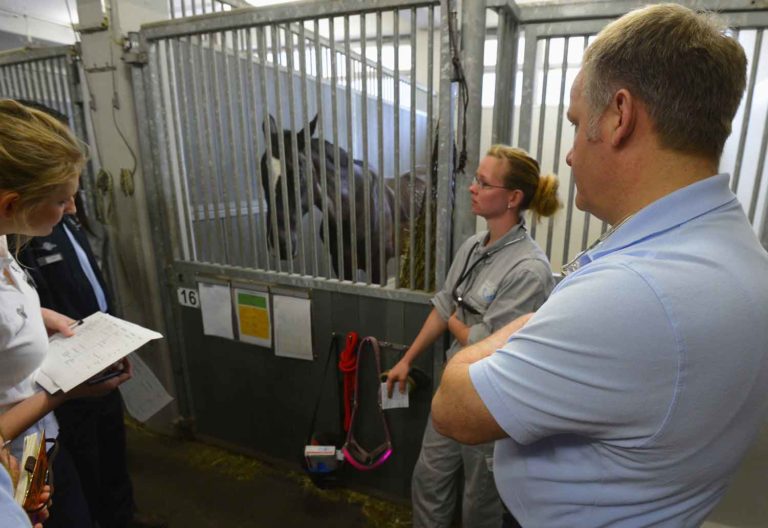
In a recent study, researchers added xylazine to a lidocaine perineural block to see if it would increase the duration of sensory blockade and analgesia. Jose Antonio Guerra, DVM, of the University of Saskatchewan, presented the results of this research at the 2024 American Association of Equine Practitioners Convention, held in Orlando, Florida.
Study Methodology
The researchers evaluated two combinations:
- 0.2 ml (20 mg) xylazine into 50 ml vial of lidocaine.
- 0.4 ml (40 mg) xylazine into 50 ml vial of lidocaine.
They started by performing abaxial nerve blocks on eight normal horses. They then injected each horse with 3 ml of the lidocaine-xylazine anesthetic (the opposite limb, which served as the control, was injected with lidocaine only). The horses received a 20 mg dose for their first treatment. After a two-month washout period, they then received a 40 mg dose.
The researchers used two stimuli to test for a withdrawal reflex: a) electrical stimulation to the lateral pastern, and b) mechanical pressure with a blunt tip to the heel bulbs. They tested these stimuli every five minutes until sensation returned, at which point end of anesthesia was determined.
Study Results
Lidocaine prevents generation and propagation of electrical impulses to block membrane depolarization and nerve conduction. Xylazine produces analgesia locally mediated by G proteins and inhibits production of substance P in dorsal root neurons. It Inhibits release of presynaptic neurotransmitters (norepinephrine) from nerve terminals to prevent action potential propagation. Modification of potassium channels in peripheral nerves also potentiates the impulse-blocking action of local anesthetics.
When these substances were combined, the duration of effect was longer compared to lidocaine alone. Vasoconstriction reduces uptake and concentrates local anesthetic at the site to increase contact with the nerves. With the combination, it is possible to decrease the amount of anesthetic used and mitigate the possibility of systemic toxicity.
“The combination of an alpha-2 agonist (xylazine) with local anesthetic (lidocaine) significantly increases the duration of action without altering the onset time,” said Guerra. This combination might be a viable option for longer-duration nerve blocks, especially when other longer-acting drugs are unavailable, on back order, or out of stock.
Related Reading
- Disease Du Jour: Diagnostic Anesthesia in Equine Lameness Exams
- Sedation and Anesthesia During Equine Emergencies
- Injectable Gold: A Potential New Treatment for Equine Osteoarthritis?
Stay in the know! Sign up for EquiManagement’s FREE weekly newsletters to get the latest equine research, disease alerts, and vet practice updates delivered straight to your inbox.

![[Aggregator] Downloaded image for imported item #18216](https://s3.amazonaws.com/wp-s3-equimanagement.com/wp-content/uploads/2025/09/30141837/EDCC-Unbranded-8-scaled-1-768x512.jpeg)
![[Aggregator] Downloaded image for imported item #18782](https://s3.amazonaws.com/wp-s3-equimanagement.com/wp-content/uploads/2025/11/03125751/EDCC-Unbranded-13-scaled-1-768x512.jpeg)

